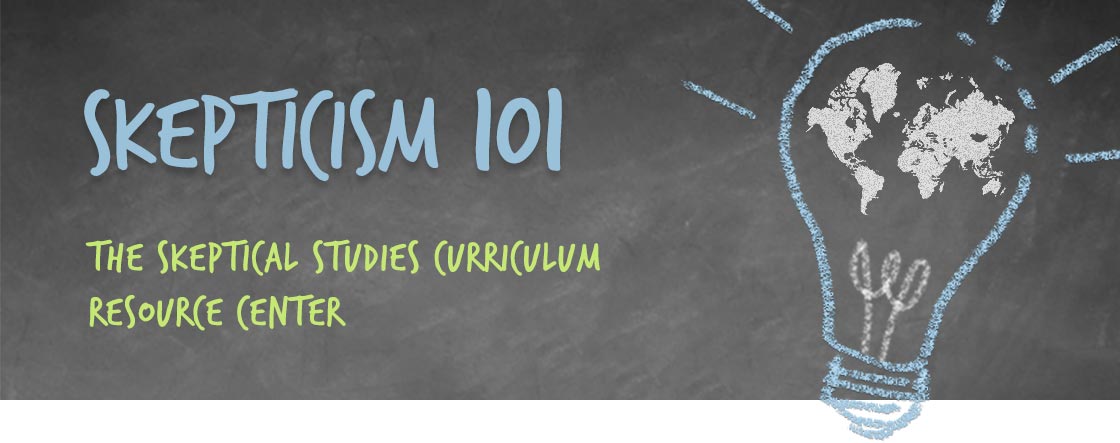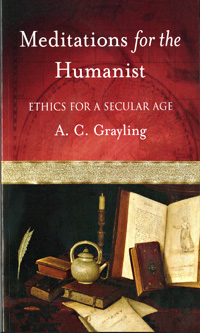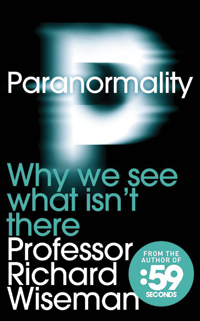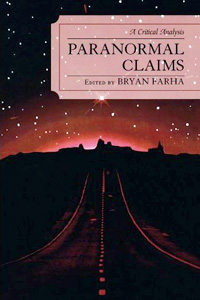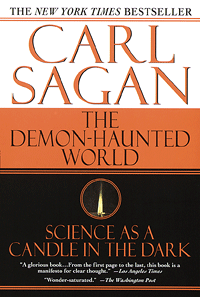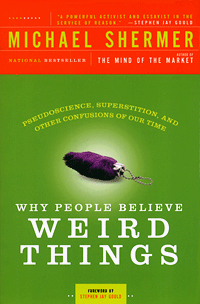You Are Browsing:
college and university academic level resources
This book was required reading for Dr. Innes Mitchell’s course, “Perspectives on Atheism” taught at St. Edwards University during spring 2012.
“Magnanimity is in short supply,” writes A. C. Grayling is this wonderfully incisive book, “but it is the main ingredient in everything that makes the world a better place” And indeed Meditations for the Humanist: Ethics for a Secular Age is itself a generous, insightful, wide-ranging, magnanimous inquiry into the philosophical and ethical questions that bear most strongly on the human condition.
Containing nearly fifty linked commentaries on topics ranging from love, lying, perseverance, revenge, racism, religion, history, loyalty, health, and leisure, Meditations for the Humanist does not offer definitive statements but rather prompts to reflection. These brief essays serve as springboards to the kind of thoughtful examination without which, as Socrates famously claimed, life is not worth living. As Graying notes in his introduction, “It is not necessary to arrive at polished theories on all these subjects, but it is necessary to give them at least a modicum of thought if one’s life is to have some degree of shape and direction.” The book is divided into three sections-Virtues and Attributes, Foes and Fallacies, and Amenities and Goods-and within these sections essays are grouped into related clusters. But each piece can be read alone and each is characterized by brevity, wit, and a liveliness of mind that recalls the best of Montaigne and Samuel Johnson. Grayling’s own perspective on these subjects is broadened and deepened by liberal quotations from Sophocles and Shakespeare to Byron, Twain, Proust, Simone de Beauvoir, Martin Luther King, Jr., and many others.
For those wishing to explore ethical issues outside the framework of organized religious belief, Meditations for the Humanist offers an inviting map to the country of philosophical reflection.—Amazon
BUY THIS BOOK
from Amazon
These resources are from a Summer Youth Program for High School Students titled, “Brain Glitches” and taught by Diane Graft. You can find in-class exercises for this summer course here.
Our brain is the best tool we have for understanding the world, but our mental software has bugs. We have a better chance of sorting out the truth from the baloney if we understand the ways in which our brain works. The PowerPoints provided here are used to discuss many topics with students, including:
- Confirmation Bias
- Agency Detection and False Positives
- Anchoring Bias and the Decoy Effect
- Memory Failures/Filling in the Gaps
- Placebo Effect
- Sunk Cost Fallacy
- Backfire Effect
- Probability
- Type 1 & Type 2 Errors
Anchoring Bias PowerPoint Found Here:
DOWNLOAD THIS RESOURCE
(815 kb Powerpoint Presentation)
Confirmation Bias PowerPoint Found Here:
DOWNLOAD THIS RESOURCE
(1.8 MB Powerpoint Presentation)
Memory PowerPoint Found Here:
DOWNLOAD THIS RESOURCE
(622 kb Powerpoint Presentation)
These exercises are from a Summer Youth Program for High School Students titled, “Brain Glitches” and taught by Diane Graft. You can find PowerPoints for the summer course here.
Prisoner’s Dilemma
The Prisoner’s Dilemma is a classic example of “game theory”. A simple game with strategies that are anything but simple. This exercise helps students understand the ways in which human brains work.
DOWNLOAD THIS RESOURCE
(49 kb Powerpoint Presentation)
Ultimatum Game
Following the Prisoner’s Dilemma, students now play a game that explores the “Volunteer’s Dilemma”.
DOWNLOAD THIS RESOURCE
(47 kb Powerpoint Presentation)
Does superstitious behavior affect your luck? In this presentation students use their knowledge of the scientific method to answer that question. For their final research project, the following superstitions are tested: (1) walking under a ladder, (2) opening an umbrella indoors, and (3) spilling salt. This presentation was created by Charles DeLoach, Paarth Trivedi, Eli Goodman, Brady Serwitz, and Sara Owens for Dr. Michael Shermer’s course, Skepticism 101: How to Think Like a Scientist (Without Being a Geek) at Chapman University during the fall 2011 semester.
DOWNLOAD THIS RESOURCE
(526 kb Powerpoint Presentation)
This presentation depicts the history of academic thought on voter turnout and shows how recent neuroscience has changed the prevailing wisdom on the subject. While political science scholars of the 70’s and 80’s believed voters were rational calculators, neuroscience has shown that emotion and narrative play a strong role in this process. This presentation was created by Michael Mermelstein for Dr. Michael Shermer’s course, “Evolution, Economics & the Brain” taught at Claremont Graduate University during the spring 2012 semester.
DOWNLOAD THIS RESOURCE
(182 kb Powerpoint Presentation)
The presentation explores the evolutionary basis for the creation and consumption of art in all forms. It discusses art’s adaptive function; as well as, its role in natural and sexual selection. The universality and evolutionary basis of aesthetic tastes in art is also discussed. This presentation was created by Amanda Limongi for Dr. Michael Shermer’s course, “Evolution, Economics & the Brain” taught at Claremont Graduate University during the spring 2012 semester.
DOWNLOAD THIS RESOURCE
(6.6 MB Powerpoint Presentation)
We all know the cliché “To err is human.” To most extent, this is true – human error is the cause of 70% of airplane crashes, 90% of car-wrecks, and 90% of workplace accidents. We love telling people that they (not us) are wrong and happily point out their oversights. But is there another side of making mistakes? This PowerPoint presentation explores why human beings are so prone to making errors and why it is sometimes quite good to make them. After all, as Kathryn Schulz also pointed out in her book “Being Wrong,” embracing error can lead to some transformative results – healed relationships and fascinating discoveries. This presentation was created by Veronika Alexander for Dr. Michael Shermer’s course, “Evolution, Economics & the Brain” taught at Claremont Graduate University during the spring 2012 semester.
DOWNLOAD THIS RESOURCE
(623 kb Powerpoint Presentation)
This book was required reading for Dr. Michael Shermer’s course, “Skepticism 101: How to Think Like a Scientist (Without Being a Geek)” taught at Chapman University during the fall 2011 semester.
“People are emotionally drawn to the supernatural. They actively want weird, spooky things to be true … Wiseman shows us a higher joy as he deftly skewers the paranormal charlatans, blows away the psychic fog and lets in the clear light of reason.”—Richard Dawkins
Richard Wiseman is clear about one thing: paranormal phenomena don’t exist. But in the same way that the science of space travel transforms our everyday lives, so research into telepathy, fortune-telling and out-of-body experiences produces remarkable insights into our brains, behaviour and beliefs. Paranormality embarks on a wild ghost chase into this new science of the supernatural and is packed with activities that allow you to experience the impossible. So throw away your crystals, ditch your lucky charms and cancel your subscription to Reincarnation Weekly. It is time to discover the real secrets of the paranormal. Learn how to control your dreams—and leave your body behind. Convince complete strangers that you know all about them. Unleash the power of your unconscious mind. —Amazon
BUY THIS BOOK
from Amazon
This book was required reading for Dr. Bryan Farha’s course, “Sociology of Belief” taught at Oklahoma City University during spring 2011.
Published in April of 2007, this academic text features articles regarding paranormal, extraordinary, or fringe-science claims. It logically examines the claims of astrology; psychic ability; alternative medicine and health claims; after-death communication; cryptozoology; and faith healing, all from a skeptical perspective. Paranormal Claims is a compilation of some of the most eye-opening articles about pseudoscience and extraordinary claims that often reveal logical, scientific explanations, or an outright scam. These articles, steeped in skepticism, teach critical thinking when approaching courses in psychology, sociology, philosophy, education, or science. —Amazon
BUY THIS BOOK
from Amazon
This book was required reading for the following courses: (1) “Skepticism 101: How to Think Like a Scientist Without Being a Geek” taught by Michael Shermer, (2) “Weird Science” taught by John Donovan, (3) “The Scientific Method: Critical & Creative Thinking” taught by Stephen Sekula et al., and (4) “Studies in Behavior: Critical Thinking” taught by Evelyn Buday.
“The great astronomer and science writer challenges New Agers and explains social phenomena like UFOs, alien abductions, recovered memories, satanic cults, witch crazes, hallucinations, and how to detect baloney. This is Sagan’s most popular book among skeptics, filled with quotable maxims, popular among college professors as a supplemental text for students, but a classic for everyone who cares about living in a sane and safe world without superstition.” —Skeptic
“Eminent Cornell astronomer and bestselling author Sagan debunks the paranormal and the unexplained in a study that will reassure hardcore skeptics but may leave others unsatisfied. To him, purported UFO encounters and alien abductions are products of gullibility, hallucination, misidentification, hoax and therapists’ pressure; some alleged encounters, he suggests, may screen memories of sexual abuse. He labels as hoaxes the crop circles, complex pictograms that appear in southern England’s wheat and barley fields, and he dismisses as a natural formation the Sphinx-like humanoid face incised on a mesa on Mars, first photographed by a Viking orbiter spacecraft in 1976 and considered by some scientists to be the engineered artifact of an alien civilization. In a passionate plea for scientific literacy, Sagan deftly debunks the myth of Atlantis, Filipino psychic surgeons and mediums such as J.Z. Knight, who claims to be in touch with a 35,000-year-old entity called Ramtha. He also brands as superstition ghosts, angels, fairies, demons, astrology, Bigfoot, the Loch Ness monster and religious apparitions. (Feb.)” —Publishers Weekly
BUY THIS BOOK
from Shop Skeptic
This book was required reading for the following courses: (1) “Skepticism 101: How to Think Like a Scientist Without Being a Geek” taught by Michael Shermer, (2) “Weird Science” taught by John Donovan, and (3) “Skepticism, Science, & the Paranormal” taught by Martin Bridgstock.
In this age of scientific enlightenment, many people still believe in mind reading, past-life regression theory, New Age hokum, and alien abduction. A no-holds-barred assault on popular superstitions and prejudices, Why People Believe Weird Things debunks these nonsensical claims and explores the very human reasons people find otherworldly phenomena, conspiracy theories, and cults so appealing. Michael Shermer takes on science luminaries like physicist Frank Tippler and others, who hide their spiritual beliefs behind the trappings of science.
Shermer, science historian and true crusader, also reveals the more dangerous side of such illogical thinking, including Holocaust denial, the recovered-memory movement, the satanic ritual abuse scare, and other modern crazes. Why People Believe Weird Things is an eye-opening resource for the most gullible among us and those who want to protect them.
BUY THIS BOOK
from Shop Skeptic
This PowerPoint is part of a course titled, “Perspectives on Atheism.”
This presentation introduces the “Social Perspectives” segment of the course. JFK’s remarks on the separation of Church and State to the Houston Ministerial Association in 1960 are addressed in the context of Rick Santorum’s criticism. Sean Faircloth’s book, Attack of the Theocrats, is previewed. The question “Is America a Christian Nation?” is addressed before examining the phenomenon of Christian Nationalism. The American Constitution as a document expressing Enlightenment principles is examined. Recent rulings of the Texas School Board are used to illustrate the political effects of Christian Nationalism. The presentation concludes with the lawsuit brought on behalf of Jessica Ahlquist as an inspiring illustration of defending secularism.
DOWNLOAD THIS RESOURCE
(99 MB Powerpoint Presentation)
This course was taught at the University of North Texas.
Excerpt from Syllabus
In this class students will utilize scientific critical thinking to examine the causes of various strange phenomena, including alleged paranormal events, magic, superstition, mystery illness, bogus therapies and pseudoscience. The main goal is to teach students how to think about weird things when they encounter them.
Learning Goals
By the end of this course, students should be able to do:
- Describe 3 scientific paradigm shifts that have occurred within the last 1000 years and explain why they happened.
- Describe the importance of temporal and spatial contiguity in relation to perceiving weird things.
- Describe how the environment selects superstitious behavior in organisms. o Describe the role that uncertainty plays in why people believe weird things.
- Describe the “law of non-contradiction” and why it must be true.
- Describe differences and similarities between logical and physical possibilities.
- Describe at least two principles of critical thinking. o Define “knowledge” and how it relates to evidence & belief.
- Demonstrate commonsense skepticism by proportioning your belief to the evidence.
- Define the “criteria of adequacy” and use them evaluate competing theories.
DOWNLOAD THIS RESOURCE
(188 kb PDF)
This course was taught at Claremont Graduate University during the spring 2012 semester.
Excerpt from Syllabus
Evolution, Economics, and the Brain is a doctoral-level Transdisciplinary Course designed to address large issues in which students employ knowledge and research protocols from many different disciplines to shed new light on specific problems. One of the books assigned—Steven Pinker’s The Better Angels of Our Nature—integrates evolution, history, anthropology, sociology, psychology, economics, and political science to explain a single phenomenon: the decline of violence. It is a model work in transdisciplinary integration.
A transdisciplinary and integrative overview of evolutionary theory, evolutionary economics, and neuroscience (“Evolution, Economics, and the Brain”) that includes a brief history and science of evolutionary theory, along with the evolution-creationism controversy and how it evolved in the context of American history and culture. As well, the application of evolutionary theory will be considered in its integration into psychology, anthropology, ethics, and economics. The course also includes an introduction to behavioral neuroscience and will focus on teaching students how new findings in the brain sciences can inform their work in the social sciences and humanities. For example: How reward acquisition is affected by risk; Why humans are typically risk-averse and when they are not; Hyperbolic discounting of future rewards; How interpersonal trust is built and maintained; How “rational” vs. “irrational” decisions are made; The basis for cooperation and aggression; The reason people punish others; The role of hormones in decisions; The basis for social norms or ethics; The sense of justice; The basis for love and hate and how these effect decisions; War and peace; Human nature; The decline of violence; The humanitarian and rights movements; and more.
DOWNLOAD THIS RESOURCE
(338 kb PDF)
This PowerPoint is part of a course titled, “Perspectives on Atheism“.
This presentation introduces the “Personal Perspectives” segment of the course. It covers the typologies of apostasy based on the work of Sociology Professor Phil Zuckerman, before introducing “The Clergy Project.” The personal experiences of Dan Barker are discussed. Various psychological factors underlying conformity to religious belief are examined, including obedience to authority, social proof, and groupthink.
DOWNLOAD THIS RESOURCE
(77 MB Powerpoint Presentation)
This PowerPoint is part of a course titled, “Perspectives on Atheism“.
This presentation draws on the work of Dale McGowan, and addresses the following topics: (1) Prevalent cultural attitudes towards atheists; (2) Our evolved tendency towards moral behavior; (3) The campaign against labeling children; (4) McGowan’s “Seven Secular Values”; (5) The Purpose Driven Life; (6) Addressing Death with Children; (7) Creative Secular Rituals; and (8) McGowan’s “Best Practices” for raising freethinkers.
DOWNLOAD THIS RESOURCE
(101 MB Powerpoint Presentation)
This PowerPoint is part of a course titled, “Perspectives on Atheism“.
This presentation introduces the “Ethical Perspectives” segment of the course. Based largely on the work of Sikivu Hutchinson, the following topics are addressed: (1) Racism in America using high profile contemporary examples; (2) Black religiosity; (3) The Black Church as a historically important safe harbor from racism; (4) Gender Politics—why African-American women are disproportionately religious; and (5) A brief historical overview of Black Freethought and Secular Humanism.
DOWNLOAD THIS RESOURCE
(110 MB Powerpoint Presentation)
This PowerPoint is part of a course titled, “Perspectives on Atheism“.
This presentation opens with criticism of the Catholic Church in popular narratives, before a discussion of the televised IQ2 Debate—“Motion: The Catholic Church is a force for good in the world.” Based largely on the work of English Historian, David Ranan, three historical landmarks of Church power are examined, including (1) The Trial of Galileo (Inquisition); (2) The Holocaust (Anti-Semitism); and (3) The Child Abuse Scandal. The presentation concludes by addressing the recent political activism of the Catholic Church opposing same-sex marriage and contraception.
DOWNLOAD THIS RESOURCE
(143 MB Powerpoint Presentation)
This PowerPoint is part of a course titled, “Perspectives on Atheism“.
This presentation introduces students to three schools of thought in the “Historical Jesus Debate”: (1) Christ-Myth Theory (Mythicists); (2) Criteria of Double Dissimilarity (Historicists); and (3) Christian Apologetics. The Gospel and Pauline accounts of Jesus are compared and contrasted, and the theory of Jesus as a character-type based on precursor dying-and-rising gods is addressed. The presentation concludes by examining implications of the Historical Jesus Debate.
DOWNLOAD THIS RESOURCE
(87 MB Powerpoint Presentation)
This PowerPoint is part of a course titled, “Perspectives on Atheism“.
This presentation introduces the “Critical Perspectives” segment of the course. Basic standards for objectively evaluating evidence are discussed, before introducing the Baylor Four-God typology based on US regional differences. The work of Karen Armstrong is used to discuss how concepts of God evolved into patriarchal monotheisms, marginalizing female divinities. Dan Dennett’s concept of “Belief in Belief” is introduced before addressing Richard Carrier’s four proofs justifying why he is not a Christian. The presentation concludes with the Epicurean refutation of God and a refutation of the Kalam Cosmological Argument.
DOWNLOAD THIS RESOURCE
(77 MB Powerpoint Presentation)
← PREVIOUS PAGE
NEXT PAGE →

